FighterJock
ACCESS: Above Top Secret
- Joined
- 29 October 2007
- Messages
- 5,603
- Reaction score
- 5,932
Forget that it is not that big as the J-20.
There's a saying in Turkish that roughly translates to "A madman threw a stone into the well, but forty wise men couldn't get it out."Forget that it is not that big as the J-20.
Well acc. to open source analysis, J-20's frontal RCS is actually pretty low and close to F-35, however beginning from +60° horizontal, J-20's RCS starts to increase. @stealthflankerThough I do wonder what the Radar Cross Section is of the KAAN compared to say the J-20 after all physical size is not everything.

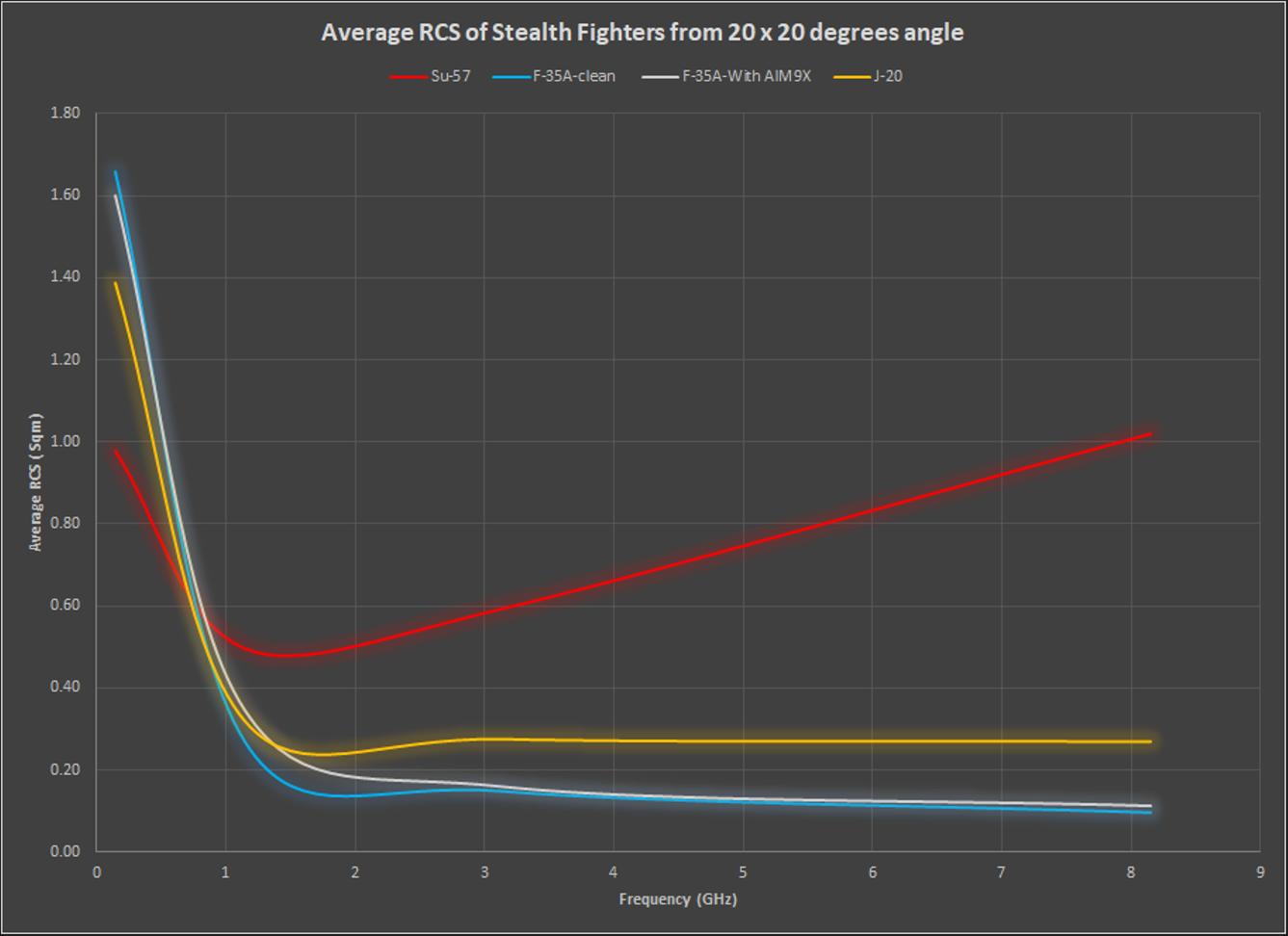
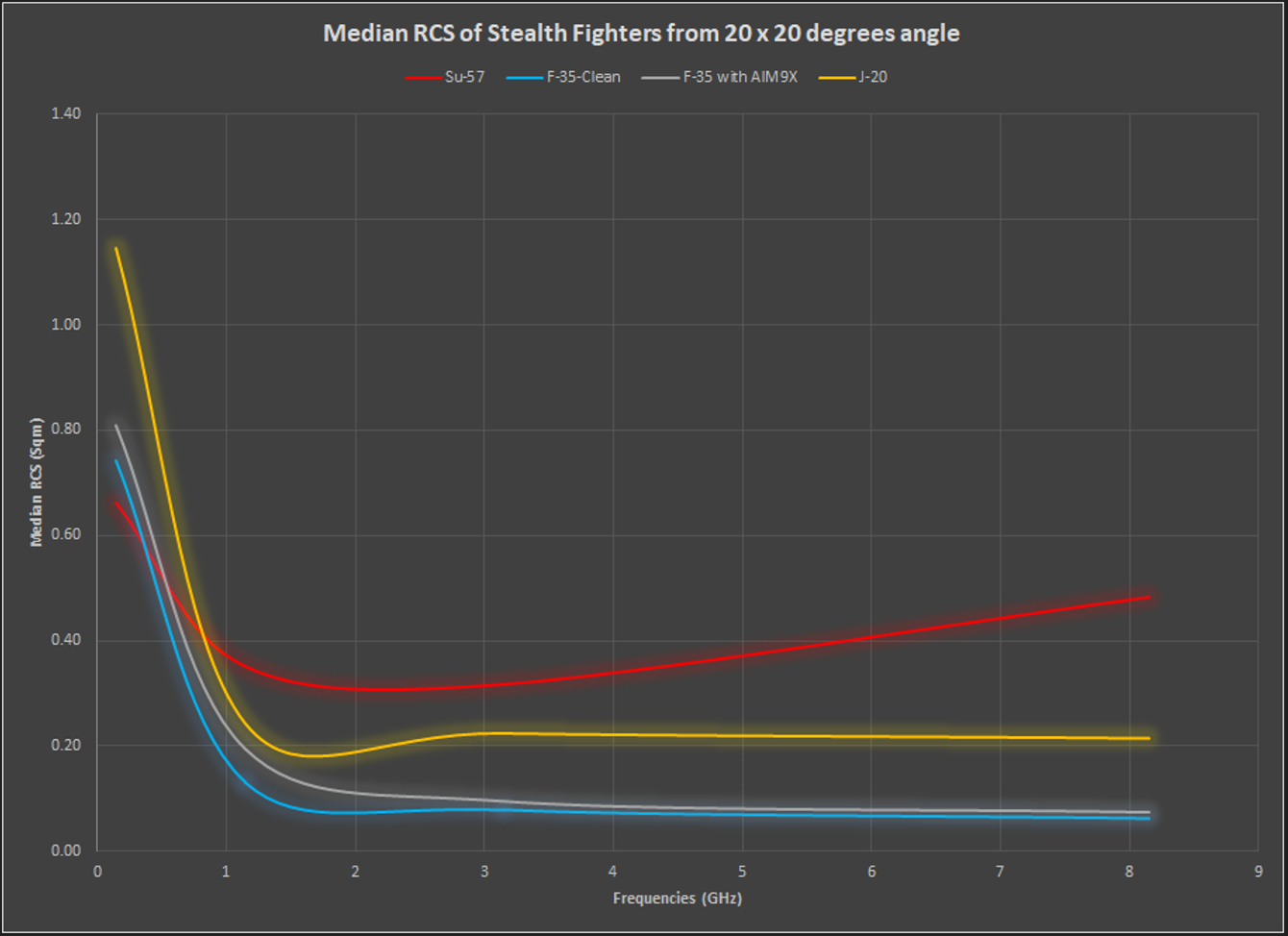
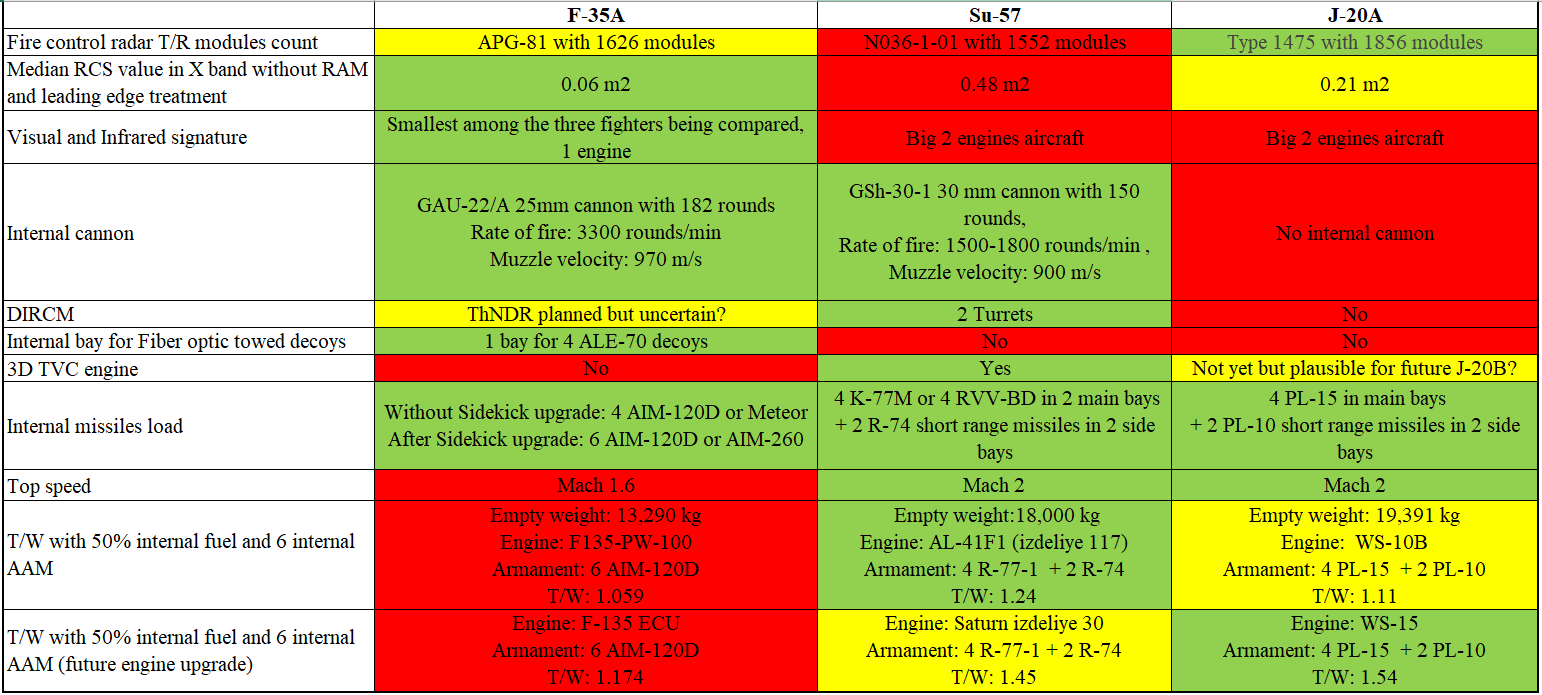
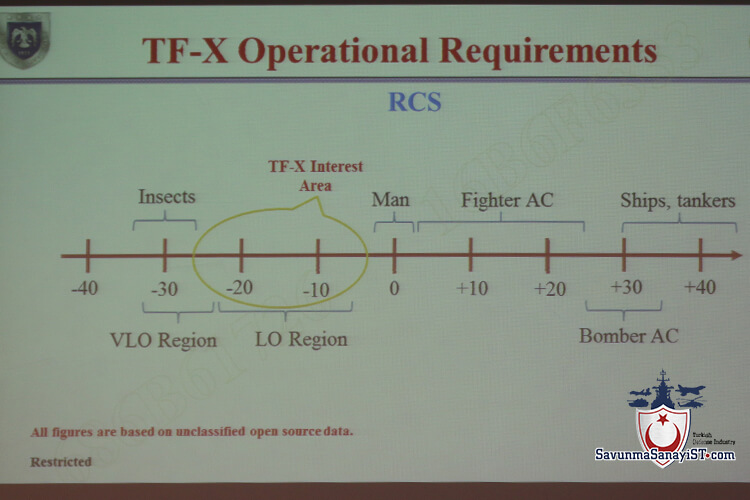
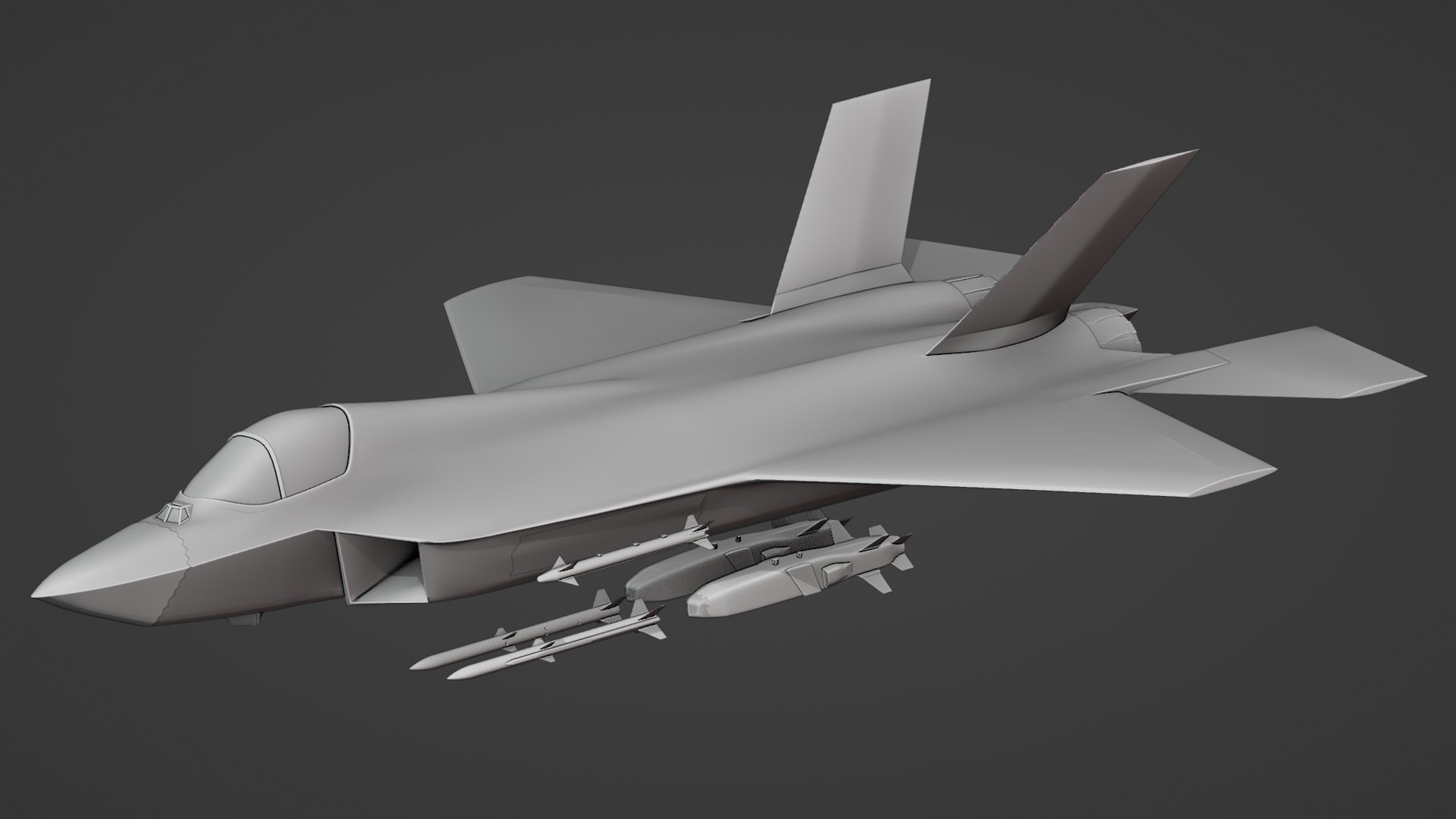
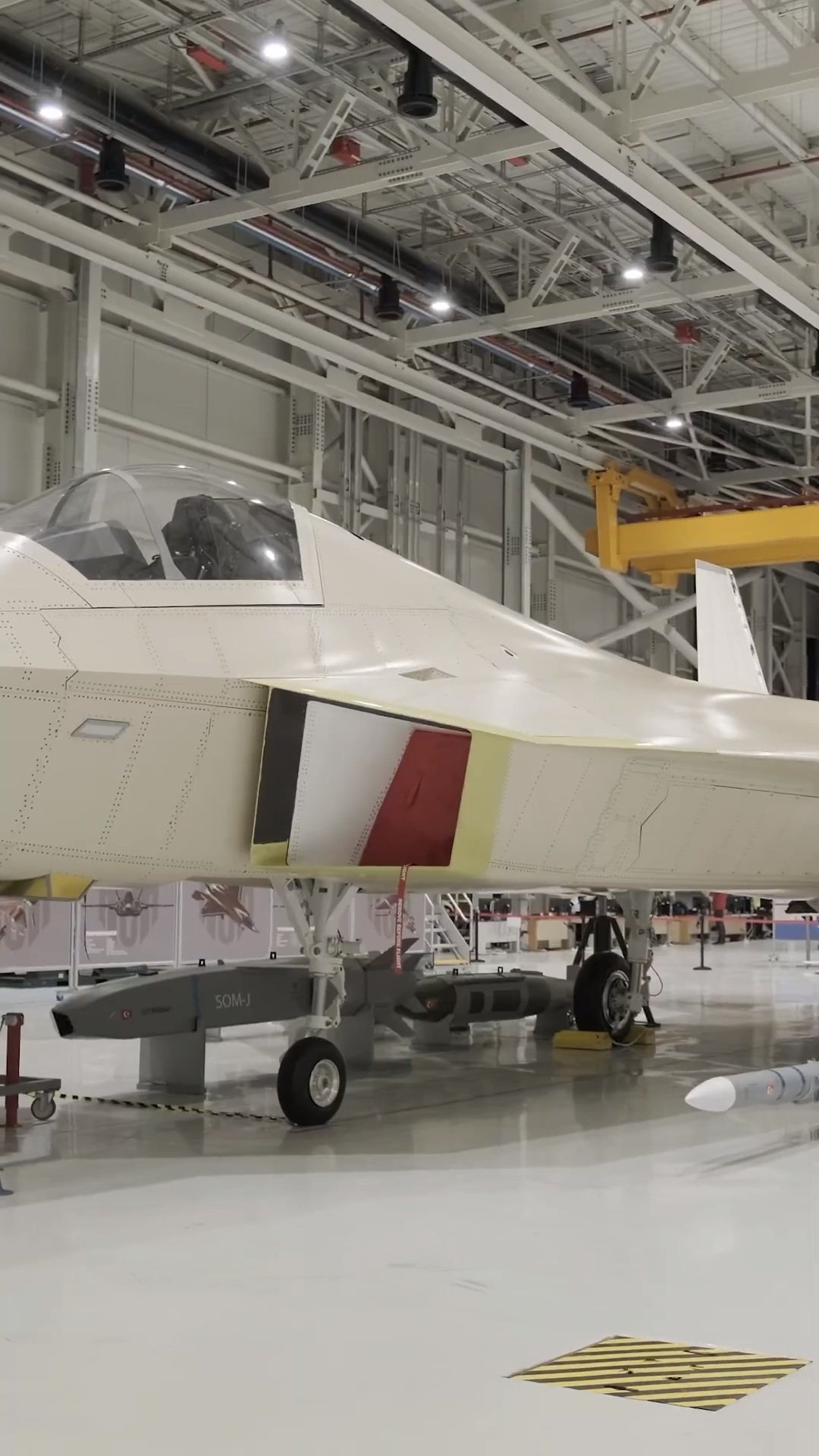
This:Any ideas as to what the rather big air to air missile is? A long range missile? Or is it Turkeys equivalent to the Meteor?
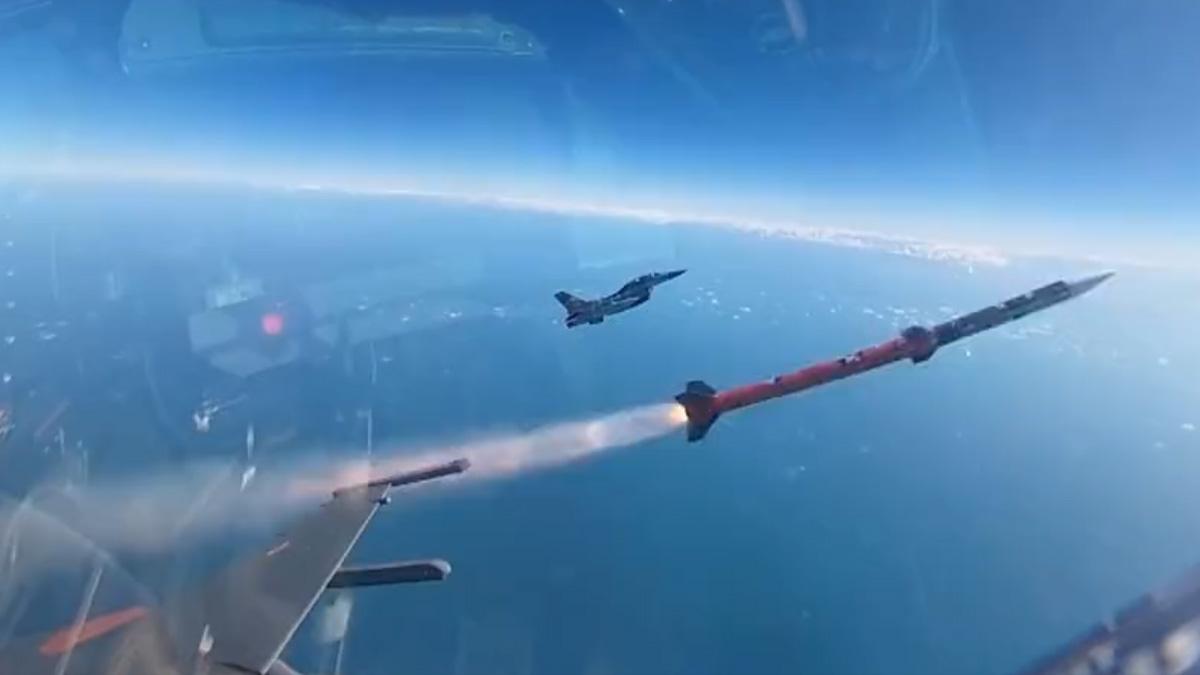
Their names were mentioned just to give the audience some idea (mind the parenthesis), the bays are designed around Bozdogan(WVR,, AIM-9XBII equivalent), Gökdogan(BVR, AIM-210C7 equivalent) and Gökhan (Liquid fuel ramjet, Meteor equivalent) missiles.
These indigenous missiles are also not just some copies, while they might look alike, they are thicker than their American equivalents as an example and they also happen to have dual pulse capabilities. They are also launched from the same rails and fed information from the same radar, so it makes sense that they would look similar to American missiles.
https://www.defenceturkey.com/en/co...-test-of-bozdogan-wvr-air-to-air-missile-4490
https://www.defenceturkey.com/en/content/bozdagan-gokdogan-missiles-enter-serial-production-5736
The quoted ranges are open to some speculation though. Army and the Air Force usually give NEZ or (at least near-NEZ ranges) as official figures(this part has been confirmed), and this would be in line with these missiles' and their equivalents' capabilities. But they are never going to publish top secret data though.



Anyway, I hope I managed to clarify some things or at least informed you a little.
Also he stated that there are 3 (Block 10) prototypes in productionView: https://x.com/KeremHok/status/1768828976577831424?s=20
I too watched the show to confirm and he does indeed say what is written in tweet.
"-The first plane will continue flying and fire munitions.
-Our main goal is to make the planes we call Blok10. We are manufacturing them now. There will be 6 of them.-We have 2 planes that we will use for static tests. Meanwhile, Iron Bird is coming.
-We test all systems over and over again.
-We will also fire weapons, while this work will continue.
-Domestic engine coming in 2028."
In order to release payloads, it first has to have internal bays. Or else they can only test external payloads and pylons. I always feel the need to underline this but the aircraft that flew was supposed to stay as a ground test article. Only after assembling it have they changed their minds and decided to make it airworthy and fly it. They changed some subcomponents in order to do that but they still haven't installed an internal bay and its doors because this prototype (P0) is a quasi-tech demonstrator, at most it will fly a couple of times before the real prototypes emerge.Okay so no weapons firing just yet, I supose I can wait for that moment to arrive when it finaly does snne, let's get the basics out of the way first in terms of flight testing.
I agree with you but his wording sounds like they are going to perform some weapons tests with this one, maybe a misunderstandingIn order to release payloads, it first has to have internal bays. Or else they can only test external payloads and pylons. I always feel the need to underline this but the aircraft that flew was supposed to stay as a ground test article. Only after assembling it have they changed their minds and decided to make it airworthy and fly it. They changed some subcomponents in order to do that but they still haven't installed an internal bay and its doors because this prototype (P0) is a quasi-tech demonstrator, at most it will fly a couple of times before the real prototypes emerge.
Those tests will begin with P1,P2 & onwards.
That's why I wrote this:I agree with you but his wording sounds like they are going to perform some weapons tests with this one, maybe a misunderstanding
But overall I agree with you, I'm simply saying that they can't test internal storage and release just yet.In order to release payloads, it first has to have internal bays. Or else they can only test external payloads and pylons. I always feel the need to underline this but the aircraft that flew was supposed to stay as a ground test article. ...
Realy good view. Kaan is looking realy like a fighterjet right now.View attachment 722510
Getting ready for the next flight. The new paint is looking good.
You should edit it, I just copy-pasted auto translation"After Hürkuş was completed, we discussed building a 19-seater passenger plane. At that time, (SSB President) İsmail Demir wanted a jet training plane (Hürjet). The state said, let's build the jet training plane first, then let's build KAAN.
Now we are building 3 KAANs, we will make 3 more KAANs afterwards, we are making 2 more KAAN static articles. We will use 2 KAAN static articles in mechanical tests, 6 KAAN will perform test flights. After that, we have the option of making 20 of them and giving them to the Air Force in 2028.
The (national) engine project for KAAN started later than KAAN. Of course, it would have been better if it started earlier. But in 2028, the Turkish engine will be on this plane. Its (development) task has been given to TR Motor and TEI.
ANKA-3 is currently flying at high subsonic speed. The new version of this, the two-engined one, will exceed the speed of sound (probably ANKA-4, wingman for KAAN). ANKA-3 will fly together with KAAN. ANKA-3 is expendable, but KAAN is not.
ANKA-3, we have now produced the second and third (birds). We will make the delivery at the end of this year (2024) or next year (2025). We'll soon make it payload-delivering.
Our wind tunnel cost 100 million USD. Europe's 2nd tunnel."
Repost from @snne @sinodefenceforum
You still made the effort to translate itYou should edit it, I just copy-pasted auto translation
Just a nice screenshotKaan getting repainted
the Person who thought of adding Vivaldi's Spring in the video deserves a serious raise.
View: https://x.com/TUSAS_TR/status/1770053138063482933?s=20
And mostly syncing the video speeds to the music, too. That was a gorgeous touch!Kaan getting repainted
the Person who thought of adding Vivaldi's Spring in the video deserves a serious raise.
a (wo)man of taste indeed!And mostly syncing the video speeds to the music, too. That was a gorgeous touch!
That doesn't imply anything? Haven't you ever listened to him before? That's the way he talks, it is incomprehensible.In a Turkish interview, Dr. Kotil says "we will be in trouble if the indigenous engine is not ready by 2028". It is not clear if he uses "we" as a reference to the country or Tusas management. Also, it is not clear if "trouble" means ending up with no engines or not. Some may even claim he uses such wording to encourage faster development. Basically, open to any kind of speculation, make of that what you will.
View: https://www.youtube.com/watch?v=yUp0ircWldk
I'm kinda expecting them to use axisymmetric thrust vectoring, like the Russians use. It's honestly a simple add to an existing engine: instead of anchoring the "turkey feather" actuators directly to the engine, they get attached to a ring that is attached to 3x or 4x hydraulic cylinders that are anchored to the engine farther forward. Only needs like 15cm travel in those ring actuators, too, so it's fairly light.Dr. Fahrettin Öztürk, vice president of Tusaş, says that Kaan will have TVC nozzle in his recent article.
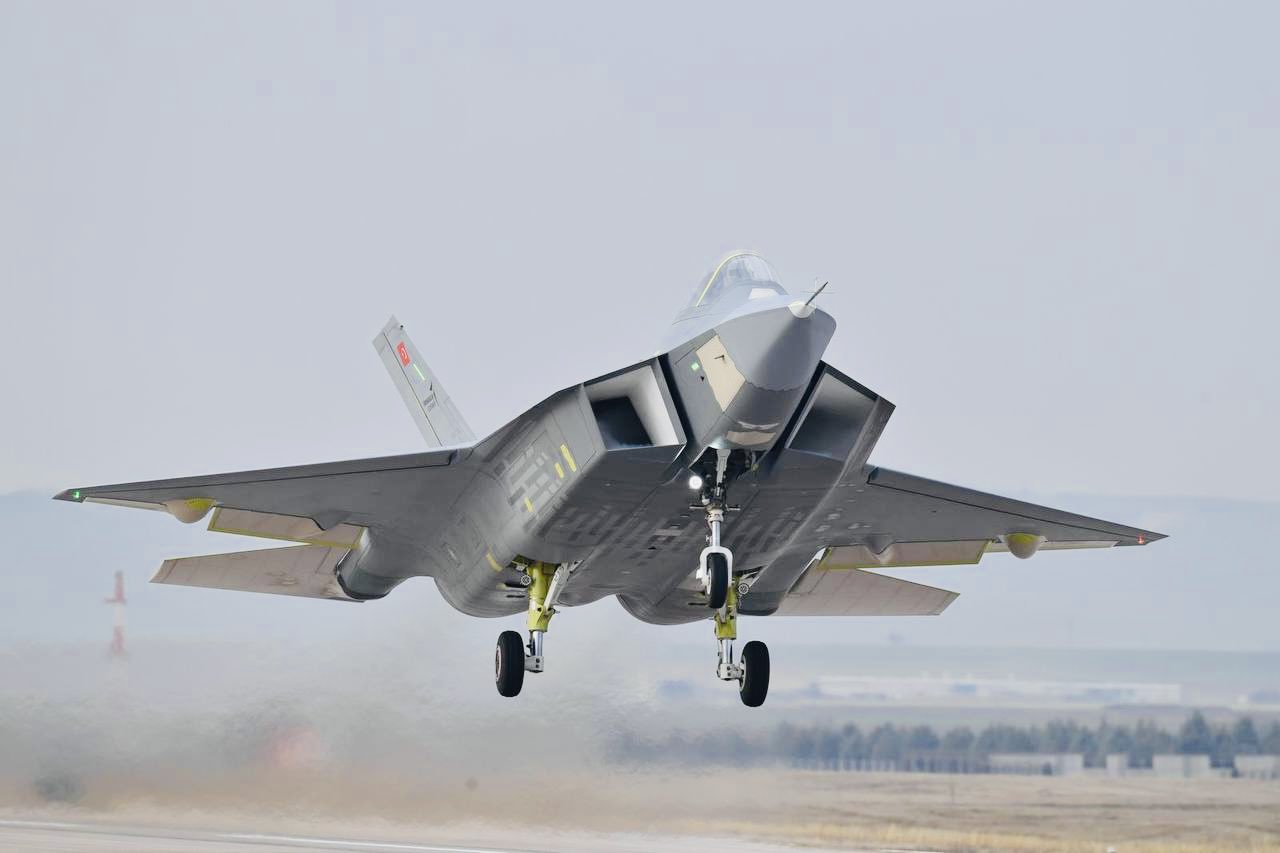
TUSAŞ’ta hasat zamanı geldi! (3. Bölüm)
TUSAŞ tarafından geliştirilen Milli Muharip Uçak (MMU) KAAN, Türk havacılık tarihinde yüzyılın projesi olarak nitelendirilen çift motorlu, düşük görünürlüklü, sensörhaber.aero
This will higly likely not be in the initial blocks though.
Dude, the plane flew only for once, cut em some slack, will ya? Enough with the speculations, lets wait and see how things end up being. Currently it is way too early to talk about these, we gotta wait and see how the engine materializes.Dr. Fahrettin Öztürk, vice president of Tusaş, says that Kaan will have TVC nozzle in his recent article.

TUSAŞ’ta hasat zamanı geldi! (3. Bölüm)
TUSAŞ tarafından geliştirilen Milli Muharip Uçak (MMU) KAAN, Türk havacılık tarihinde yüzyılın projesi olarak nitelendirilen çift motorlu, düşük görünürlüklü, sensörhaber.aero
This will higly likely not be in the initial blocks though.
This is the preliminary design that TEI and TR Motor were working on, at least the afterburner mixer part looks like that of a proper 5th gen fighter engine to my admittedly amateur eyes. @F119Doctor what do you think?For memory:
Thrust vectoring F110 were flown mid 90's. F-16 MATV (Multi Axis Thrust Vectoring) program, with General Electric AVEN (Axisymmetric Vectoring Exhaust Nozzle).
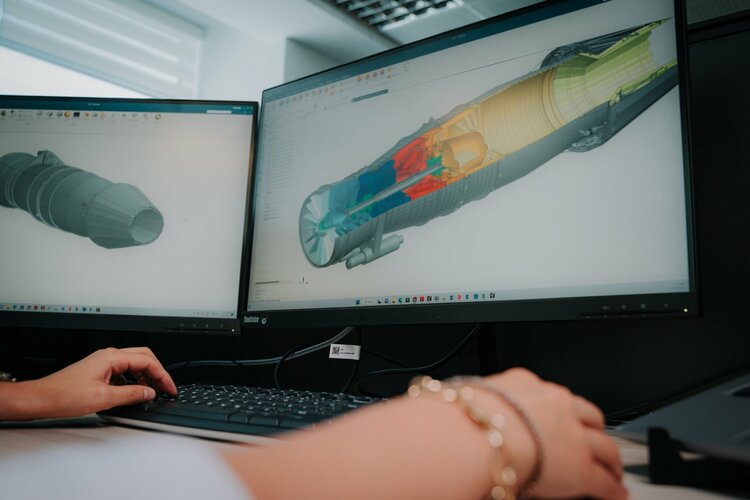
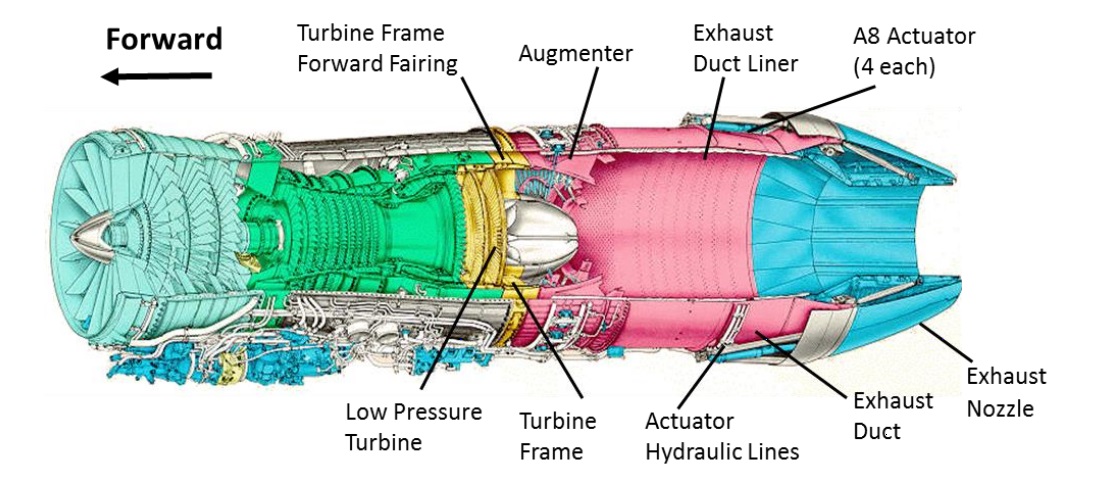
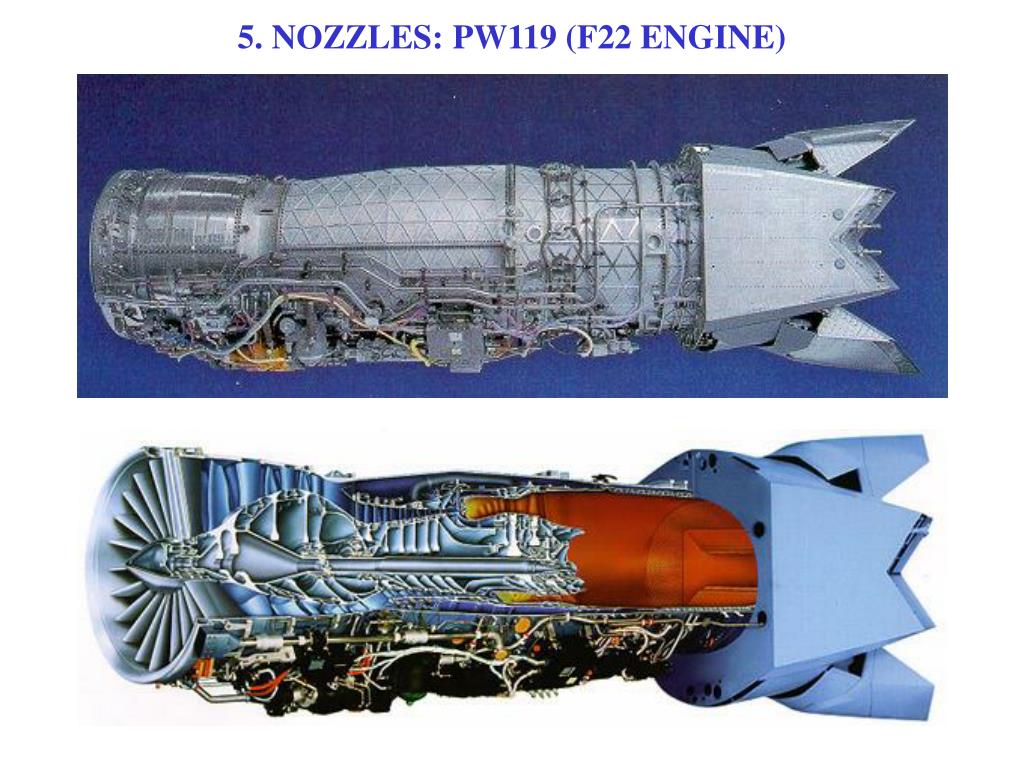
In order to release payloads, it first has to have internal bays. Or else they can only test external payloads and pylons. I always feel the need to underline this but the aircraft that flew was supposed to stay as a ground test article. Only after assembling it have they changed their minds and decided to make it airworthy and fly it. They changed some subcomponents in order to do that but they still haven't installed an internal bay and its doors because this prototype (P0) is a quasi-tech demonstrator, at most it will fly a couple of times before the real prototypes emerge.
Those tests will begin with P1,P2 & onwards.
Might just use GTU-0 as a flying testbed for sensors, firing externally. Software seems to be one of the more problematic parts of the F-35 programme. The earlier this stuff gets tested in the air, the better.I agree with you but his wording sounds like they are going to perform some weapons tests with this one, maybe a misunderstanding
The only thing that appears to be stealth in the augmentor area is the chevron divergent segment tips. The flame holders appear to be conventional radial design with no significant low observable features.This is the preliminary design that TEI and TR Motor were working on, at least the afterburner mixer part looks like that of a proper 5th gen fighter engine to my admittedly amateur eyes. @F119Doctor what do you think?
View attachment 722946
Below are F110 and F119 as references
F110

F119

Might just use GTU-0 as a flying testbed for sensors, firing externally. Software seems to be one of the more problematic parts of the F-35 programme. The earlier this stuff gets tested in the air, the better.
Unfortunately, they didn't. MURAD's development hit a serious obstacle, and they urgently need a testbed aircraft. It turns out you can develop the software up to only a certain point by flying the radar on an F-16 and making necessary adjustments on the ground (who could have guessed right!). Physical development of a radar ≠ software performance of the radar. Certain high-ranking individuals at SSB couldn't understand that, and their forced decisions cost us some precious years....I don't know how they managed to get away with it with the F-16 Ozgur programme to nationalise Block 30.
